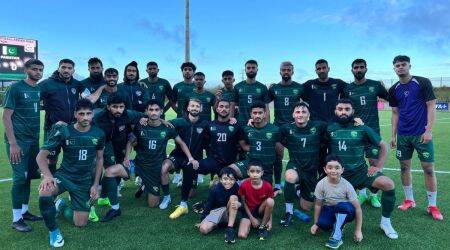More than a decade after Spain’s golden generation won the 2010 FIFA World Cup, and back to back European championships, the La Furia Rojas have ascended back to the top.
Spain have also deviated slightly from their hyper focused obsession with tiki-taka. The iconic style of play that brought the Spanish national team much of their success is characterized by a short-passing possession focused approach, where patience is key to breaking down opposition defences. But in today’s modern game, this approach has vulnerabilities, especially to aggressive gegenpressing and swift counter-attacks.
Luis de la Fuente’s tactics against Croatia in the final make this very clear. Spain ended the game with only 55% possession, a far cry from the 70% that the Spain of the past used to strive for. Throughout the game, Spain’s forwards ran with the ball towards the Croatian keeper Dominic Livakovic’ goal. They played more direct and vertical football than what so many people are used to seeing from Spain.
It is quite fitting that captain Jordi Alba, the last remaining member of the 2012 Euro winning squad, tucked away Spain’s 6th penalty to seal their UEFA Nations League triumph against Croatia. Spain’s resurgence from a decade of haunted memories has manifested from a young new look squad, and the evolution of tiki-taka into a system more suited for the demands of the modern game.
Since Iker Casillas lifted the 2012 European championship trophy, the once feared national team has gone through a rough patch. A disappointing group stage exit in the 2014 World Cup was poorly remedied by round of 16 exits in 2018 and 2022, as well as the 2016 Euros. Vincent del Bosque, the man who coached Spain to World Cup and European championship triumph, retired from management in 2016. In the next 7 years, Spain ran through 5 different managers, including the embarrassing sacking of Julian Lopetegui just three days before the 2018 World Cup began in Russia.
But in recent years, the Spanish national team has gone through somewhat of a renaissance, both in their personnel and style of play. The squad Spain brought to the World Cup in Qatar last year was vastly different to the one they fielded in 2018. The likes of Ramos, Pique, Iniesta, and David Silva had all retired, while other older players were dropped from the team. Only three players over the age of 30 retained their place.
Advertisement
The core of the team was young or in their prime, and carried plenty of experience from top-flight European football. While Luis Enrique’s bold gamble did not pay off in Qatar, it is that very same core that has spearheaded Spain’s Nations League conquest.
The average age of the XI that started yesterday’s final against Croatia is 27. Remove 34 year old Jordi Alba and 37 year old Jesus Navas from that dataset and the average age drops to just 25.
But Spain are still not a finished product. Reliable replacements for both aging fullbacks are required. Spain also desperately need a world-class striker to lead their line. Against Croatia in the final, they could only muster 2 shots on target. Alvaro Morata has time and time again failed to prove his worth, and 33-year old Joselu is not viable in the long term. Players like Ansu Fati and Fran Garcia are still raw talents, and need to be moulded into quality starters.
Also ReadWithout Lionel Messi, Argentina labors to 2-0 win over Indonesia in friendly


Click here for more
A hard-fought 90 minutes plus extra time against Croatia meant Spain sealed an unglamorous victory on penalty kicks, but a new era of Spanish football has well and truly begun. While the country will surely celebrate UEFA Nations League victory, Spain’s metal will truly be tested at next year’s European championships. Spain have the talent to go far, but whether it all comes together on the biggest stage is yet to be seen.



